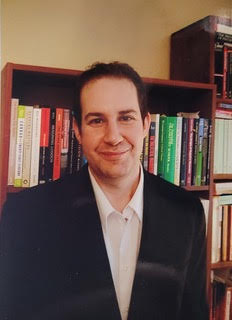
Assistant Professor of English Michael Mirabile has taught many popular film classes at Lewis & Clark. Recently, he released his first book, “The Edges of Noir,” a study on a phase of noir film that is rarely acknowledged by scholars. He presented his work to students and faculty on March 11. The book focuses on films made in what Mirabile calls the “Late-Noir” period, also known as “pulp-noir,” typically considered to have occurred between 1959 and 1970 or ’71. His book focuses on films such as “Shock Corridor” (1963), “The Naked Kiss” (1964), “The 3rd Voice” (1960) and “Point Blank” (1967).
“I had been interested in writing about film noir for a while … I started looking at the basic chronology and I noticed that it was divided into two periods: classical noir and neo-noir. But then there was that period in-between of about 15 to 20 years,” Mirabile said. “I felt that it was very neglected — nobody really talked about it in depth, mostly in passing. Many neglect that it exists, and my book argues that it does. It is basically an effort to flesh out those in-between years which people usually don’t associate
with film noir.”
Mirabile’s writing process was not direct; he began by writing academic articles on films, without any intention of completing a book, before realizing his works followed a theme and could come together.
“I had been slowly, without having a vision of the whole project, building material around the idea of this other period of noir. I didn’t know exactly where it was going. I wrote a long chapter that I originally thought was going to be an article, but it just kept going. Then I started thinking, ‘Maybe there’s a whole book in this,’” Mirabile said. “When the pandemic hit, I was working from home a lot more, which made it easy to shift into ‘writing mode.’ Over that a two-and-a-half-year period, I started turning that research material and my interpretations into separate
chapters, compiled thematically.”
Mirabile detailed the distinction that many scholars make regarding the classification of noir, whether as a style or a genre.
“Film noir is somewhat hard to define — some people think of it as a genre, some as a style, some as a movement. Personally, I go back and forth. I would say as a general characterization of film noir, with its 80-year history, it’s more of a genre. But when I look at (pulp noir), it seems to me more of a style. Films of that era don’t really follow discernible plot conventions, and yet they can be described as noir based on style,” Mirabile said.
He specified how neo-noir, from the 1970s through today, is difficult to define.
“This may be too much of a generalization, but if the classical theory is mostly a genre – defined by plot construction and character types — and the late period is more of a style, I feel like the neo-noir is hard to define as either of those because it goes off in so many different directions,” said Mirabile.
This topic is a special one for Mirabile. He has spent his academic life studying comparative literature and critical film theory.
“I’ve been really interested in film criticism for a long time,” he said. “I was secondarily starting to get very interested in film noir; I think my interest stemmed from the fact that a lot of film noir can be interpreted in multiple ways. It started off as an interpretive problem — looking into concealed meanings within
films — which drew me to film noir in general and then to particular examples of that later.”
When asked about his next project, Mirabile had an exciting answer. He is currently working on his next book, “Murder in Motion.” There is no set release date, but he is “knee-deep” in the process.
“I’ve written a couple of chapters already and hope to finish over the summer. (“Murder in Motion”) is more focused on literature, but there is the occasional film or television example,” he said. “It’s about the genre of the suspense thriller in fiction, but more particularly the sociological dimensions of it. It’s an attempt to apply social analysis to the thriller. I look at urban setting and the role of things like transportation and communication and how the increasing speed of those things changes the format of the thriller.”
Mirabile has compiled a wonderful book on a rarely discussed era of film noir, and, if you are interested in suspense and thriller literature, he will have more work for you soon.
Subscribe to the Mossy Log Newsletter
Stay up to date with the goings-on at Lewis & Clark! Get the top stories or your favorite section delivered to your inbox whenever we release a new issue.

Leave a Reply